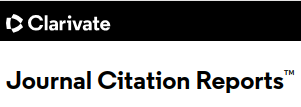Entropy of a restricted primitive model electrolyte using a mean electrostatic potential approach
DOI:
https://doi.org/10.5488/cmp.28.13801Keywords:
electrolytes, restricted primitive model, entropy, thermodynamic integration, Monte Carlo simulations, symmetric and modified Poisson-Boltzmann theoriesAbstract
The excess entropy of restricted primitive model electrolytes is calculated using a potential based approach through the symmetric Poisson-Boltzmann and the modified Poisson-Boltzmann theories. The theories are utilized in conjunction with a statistical thermodynamics equation that is shown to be equivalent to thermodynamic integration. Electrolyte systems having ionic valencies 1:1 and 2:2 with diameters 3 × 10−10 m and 4.25 ×10−10 m are treated over a wide range of concentrations. The exact radial distribution functions for the model electrolytes obtained from Monte Carlo simulations in the canonical ensemble are compared with the corresponding theoretical predictions. Furthermore, the radial distribution functions from the theories and the simulations are used in the Laird-Haymet entropy expansion equations [ J. Chem. Phys., 1994, 100, 3775] to estimate the excess entropy of the solutions. These equations take into account multi-particle distribution functions, which are approximated using a “ring” term. In general, the modified Poisson-Boltzmann theory gives results that are more consistent with the simulation data than those from the symmetric Poisson-Boltzmann theory. The results show that the excess entropy is negative with its absolute value increasing for 1:1 electrolytes with increasing concentration. The symmetric Poisson-Boltzmann values are slightly overestimated, while the modified Poisson-Boltzmann values are slightly underestimated relative to the simulations. The curves for 1:1 electrolytes including that from the Laird-Haymet equations are consistent with each other, while only the MPB curves for 2:2 electrolytes at 4.25 × 10−10 m are qualitative relative to the simulations up to about 1 mol/dm3. The 2:2 electrolyte curves reveal a characteristic inflection and plateau. The results obtained in the low concentration range (< 0.01 mol/dm3) are consistent with the predictions of the Debye-Hückel limiting law.
References
Boltzmann L., Sitzungbetichte der Kaiserlichen Akademie der Wissenschaften Mathematisch-Naturwissen Classe. Part II, Vol. LXXVI.76, 1877, 373.
Gibbs J. W., Am. J. Sci., 1878, s3-16, 1875–1978. DOI: https://doi.org/10.2475/ajs.s3-16.96.441
Shannon C. E., Bell Syst. Tech. J., 1948, 27, 379–423. DOI: https://doi.org/10.1002/j.1538-7305.1948.tb01338.x
Hummer G., Soumpasis D. K., J. Chem. Phys., 1993, 98, 581. DOI: https://doi.org/10.1063/1.464600
McQuarrie D. A., Statistical Mechanics, Harper and Row, New York, 1976.
Green H. S., Molecular Theory of Liquids, North-Holland, Amsterdam, 1952.
Laird B. B., Haymet A. D. J., Phys. Rev. A, 1992, 45, 5680. DOI: https://doi.org/10.1103/PhysRevA.45.5680
Hernando J. A., Mol. Phys., 1990, 69, 319. DOI: https://doi.org/10.1080/00268979000100211
Hernando J. A., Mol. Phys., 1990, 69, 327. DOI: https://doi.org/10.1080/00268979000100221
Laird B. B., Haymet A. D. J., J. Chem. Phys., 1994, 100, 3775. DOI: https://doi.org/10.1063/1.466365
Silverstein K. A. T., Dill K. A., Haymet A. D. J., J. Chem. Phys., 2001, 114, 6303. DOI: https://doi.org/10.1063/1.1355997
Lazaridis T., J. Phys. Chem. B, 1998, 102, 3531. DOI: https://doi.org/10.1021/jp9723574
Lazaridis T., Karplus M., J. Chem. Phys., 1996, 105, 4294. DOI: https://doi.org/10.1063/1.472247
Hernando J. A., Blum L., Phys. Rev. E, 2000, 62, 6577. DOI: https://doi.org/10.1103/PhysRevE.62.6577
Laird B. B., Wang J., Haymet A. D. J., Phys. Rev. E, 1993, 47, 2491. DOI: https://doi.org/10.1103/PhysRevE.47.2491
Laird B. B., Wang J., Haymet A. D. J., Phys. Rev. E, 1993, 48, 4145. DOI: https://doi.org/10.1103/PhysRevE.48.4145
Outhwaite C. W., In: Statistical Mechanics, Vol. 2, Singer K. (Ed.), The Royal Society of Chemistry, first edn., 1975, 188–255.
Quiñones A. O., Bhuiyan L. B., Abbas Z., Outhwaite C. W., Condens. Matter Phys., 2018, 21, 23802. DOI: https://doi.org/10.5488/CMP.21.23802
Quiñones A. O., Bhuiyan L. B., Abbas Z., Outhwaite C. W., J. Mol. Liq., 2023, 371, 12119. DOI: https://doi.org/10.1016/j.molliq.2022.121119
Molero M., Outhwaite C.W., Bhuiyan L. B., J. Mol. Liq., 2023, 390, 123025. DOI: https://doi.org/10.1016/j.molliq.2023.123025
Molero M., Outhwaite C. W., Bhuiyan L. B., Phys. Chem. Chem. Phys., 2024, 26, 10029. DOI: https://doi.org/10.1039/D3CP05808E
Ruas A., Moisy P., Simonin J.-P., Bernard O., Dufreche J.-F., Turq P., J. Phys. Chem. B, 2005, 109, 5243. DOI: https://doi.org/10.1021/jp0450991
Blum L., Mol. Phys., 1975, 30, 1529. DOI: https://doi.org/10.1080/00268977500103051
Høye J. S., Blum L., Mol. Phys., 1978, 78, 299. DOI: https://doi.org/10.1080/00268977800100221
Sanchez-Castro C., Blum L., J. Phys. Chem. B, 1989, 93, 7478. DOI: https://doi.org/10.1021/j100358a043
Outhwaite C. W., Chem. Phys. Lett., 1978, 53, 599. DOI: https://doi.org/10.1016/0009-2614(78)80078-5
Outhwaite C. W., J. Chem. Soc., Faraday Trans. 2, 1987, 83, 949. DOI: https://doi.org/10.1039/F29878300949
Outhwaite C. W., Molero M., Bhuiyan L. B., J. Chem. Soc., Faraday Trans., 1991, 87, 3227. DOI: https://doi.org/10.1039/FT9918703227
Outhwaite C. W., Molero M., Bhuiyan L. B., J. Chem. Soc., Faraday Trans., 1993, 89, 1315. DOI: https://doi.org/10.1039/FT9938901315
Outhwaite C. W., Molero M., Bhuiyan L. B., J. Chem. Soc. Faraday Trans., 1994, 90, 2002.
Outhwaite C. W., Condens. Matter Phys., 2004, 7, 719. DOI: https://doi.org/10.5488/CMP.7.4.719
Hansen J. -P., McDonald I. R., Theory of Simple Liquids, 2nd Edn., Academic Press, London, 1990.
Hribar Lee B., Vlachy V., Bhuiyan L. B., Outhwaite C. W., Molero M., Mol. Phys., 2003, 101, 2969. DOI: https://doi.org/10.1080/00268970310001608441
Reščič J., Vlachy V., Bhuiyan L. B., Outhwaite C. W., Langmuir, 2004, 21, 481. DOI: https://doi.org/10.1021/la049285+
Lamperski S., Mol. Simul., 2007, 33, 1193. DOI: https://doi.org/10.1080/08927020701739493
Frenkel D., Smit B., Understanding Molecular Simulation, From Algorithms to Applications, Academic Press, San Diego, 1996.
Kjellander R., Mitchell D. J., J. Chem. Phys., 1994, 101, 603. DOI: https://doi.org/10.1063/1.468116
Mitchell D. J., Ninham B. W., Chem. Phys. Lett., 1978, 53, 397. DOI: https://doi.org/10.1016/0009-2614(78)85426-8
Carnie S. L., Torrie G. M., Valleau J. P., Mol. Phys., 1984, 53, 253. DOI: https://doi.org/10.1080/00268978400102261
Harned H. S., Owen B. B., The Physical Chemistry of Electrolyte Solutions, 3rd ed., Reinhold, New York, 1958.
Robinson R. A., Stokes R. H., Electrolyte Solutions, 2nd ed., Dover, New York, 2002.
Guggenheim E. A., Stokes R. H., The International Encyclopedia of Physical Chemistry and Chemical Physics, Vol. 1, Equilibrium Properties of Aqueous Solutions of Single Strong Electrolytes, Pergammon Press, Oxford, 1969.
Bjerrum N., Dansk K., Videnskab. Selskab, Math.-Fys. Medd., 1926, 7, 1.
Barthel J., Krienke H., Kunz W., Physical Chemistry of Electrolyte Solutions: Modern Aspects, Topics in Physical Chemistry, Vol. 5, Springer, New York, 1998.
Holovko M., In: Ionic Soft Matter: Modern Trends in Theory and Applications, Henderson D., Holovko M., Trokhymchuk A. (Eds.), NATO Science Series II. Mathematics, Physics and Chemistry, Vol. 206, Springer, Dordrecht, 2005.
Rossky P. J., Dudowicz J. B.,Tembe B. L., Friedman H. L., J. Chem. Phys., 1980, 73, 3372. DOI: https://doi.org/10.1063/1.440533
Rogde S. A., Hafskjold B., Mol. Phys., 1983, 48, 1241. DOI: https://doi.org/10.1080/00268978300100891
Malatesta F., J. Solution Chem., 2020, 49, 1536. DOI: https://doi.org/10.1007/s10953-020-01041-8
Downloads
Published
License
Copyright (c) 2025 Stanislaw Lamperski, L. B. Bhuiyan, Christopher W. Outhwaite, Rafal Gorniak

This work is licensed under a Creative Commons Attribution 4.0 International License.


















